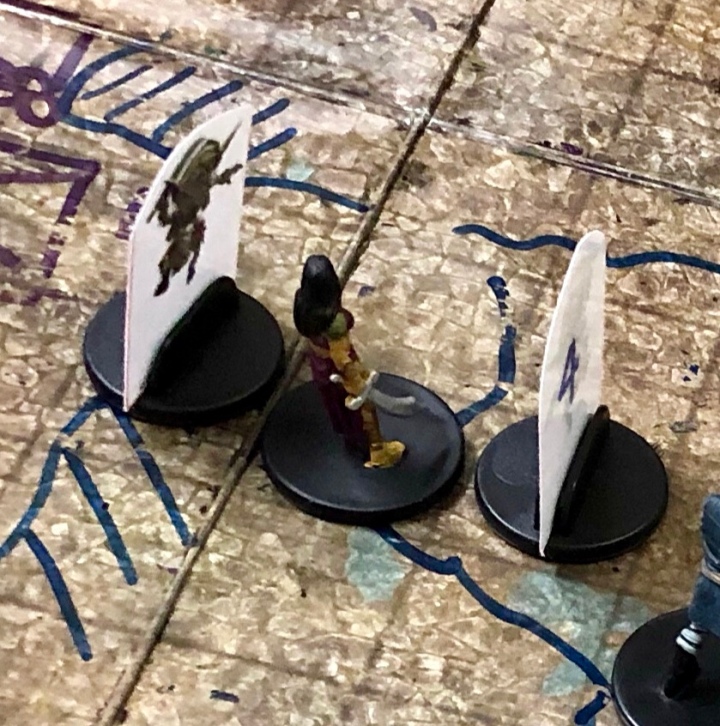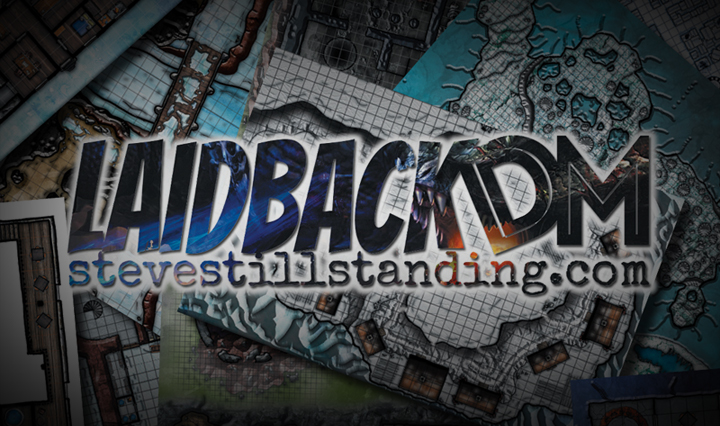Flanking is an optional rule in D&D 5e, generally used with miniatures (although you can also use it in theater-of-the-mind combat if you want—I do). Flanking is where two or more miniatures ‘surround’ another (which we’ll call the 3rd), on directly opposite sides. The theory is that the 2nd miniature is distracting the 3rd while the 1st attacks, granting Advantage to the 1st’s attacks (and then the 2nd’s, if they are still in the same position when their turn rolls around). Flanking applies to melee attacks only. Sorry, archers—you already get it pretty good (especially if you’re a Rogue).
If my description is a little unclear, here’s the official rule from the DM’s guide: “When a creature and at least one of its allies are adjacent to an enemy and on opposite sides or corners of the enemy’s space, they flank that enemy, and each of them has Advantage on melee attack rolls against that enemy.”

Not every DM uses the flanking rule, but it is an option that enables the party to think more tactically (and in more of a meta-gaming way, if you want to think of a downside) in combat. Much like the use of special abilities using bonus actions that stun or trip opponents to give Advantage first before your actual attack action, the flanking rule means players will tend to think how they can get an Advantage in any fight by flanking opponents any opportunity they can. Having finished off a monster, a player might deliberately move behind another monster to allow one of their team mates an opportunity to move up to the opposite side and have Advantage on their attack.
Flanking does have a downside to play – battles with miniatures tend to be more static, as inevitably those monsters or PCs escaping the flanking situation tend to be subjected to opportunity attacks as they move out of the flanked situation. Thus they hold their ground more often.
Multiple flanking is where a miniature is surrounded on all sides, with each character directly opposite giving the other Advantage. This makes short work of big monsters, but also means the characters can be damaged more easily as they are all in close combat with a major beastie (I roll randomly to see who gets hit in these situations, simulating the monster flailing around it to try to get out of the situation. Unless it’s two sizes bigger than the PCs, and then it can step over them).
Does flanking unbalance the game? That depends. If you’re the sort of DM who likes to use small numbers of more powerful opponents, the PCs can gain the upper hand if they can use their superior numbers to constantly flank. If you prefer to use large numbers of weaker monsters it makes them more effective as they can use flanking tactics to hit the PCs more often and wear them down. With flanking, even large numbers of low-level Goblins can wear down higher-level melee-based characters. I don’t believe flanking unbalances the game. It just means both players and DM need to think more tactically when using the rule.
So, if you’re not currently using flanking, you may wish to consider it. And remember: players may get Advantage from flanking, but monsters do, too.
Game on!
Steve 😊
For more Laidback DM, click here.




Interesting article! In my opinion, the unbalancing of the game that comes as a result of flanking has more to do with the fact that it nerfs any creature that has pack tactics, or any other ability that give them advantage for having an ally close to enemies. I also run a lot of combat, and it seems to me that using the flanking rules just causes all the melee characters to cluster up and hammer each other instead of behaving more tactically.
LikeLiked by 1 person
Thanks! From my point of view, it’s more attacks of opportunity that make players ‘cluster’ and become less mobile in combat. PCs with abilities that allow them to avoid those reactions (swashbucklers, for instance, or spell casters using shocking grasp successfully) tend to mean those players move more tactically as they don’t worry about monster opp attacks. Some other players take the risks, but more prefer to sit tight to avoid the possibility of an extra hit. Having said that, every combat is different, so I’m generalising a bit here lol 😊👍
LikeLiked by 1 person